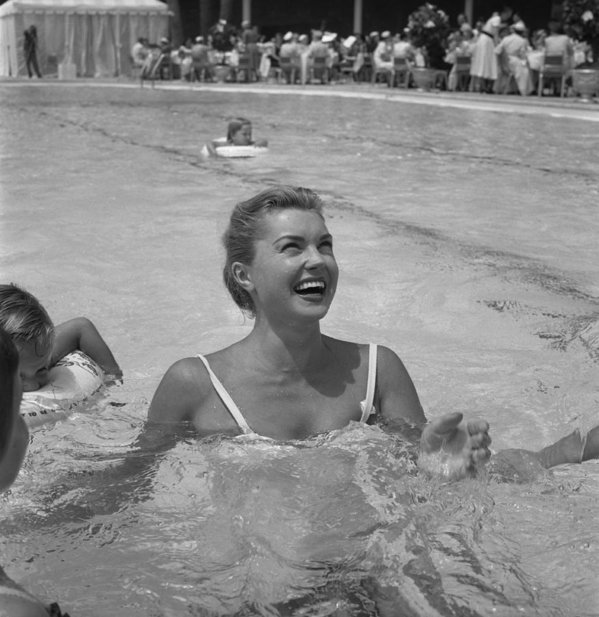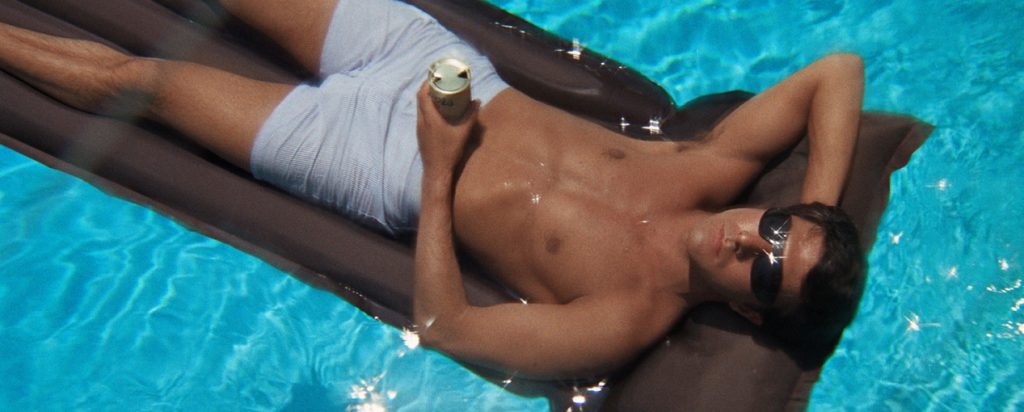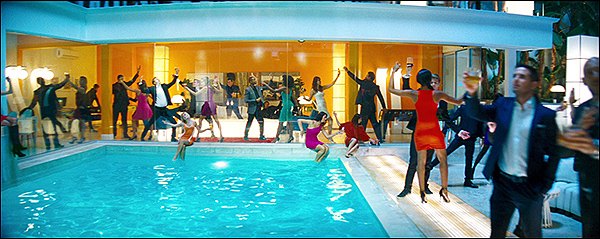With summer heating up, a lot of us are dreaming of getting refreshed at the beach or cooling down in a pool. If you’re lucky enough to have a pool in your backyard, you might be wondering how to keep costs down in the long summer ahead while your family enjoys lounging poolside. Your choices of pump, heating, and times of operation all factor into your energy costs. The volume of water in the pool is yet another factor in overall cost. It all adds up. You can expect to spend $200 to $600 to maintain a pool over the course of the summer.
Before the 1950s, a private pool was a luxury reserved for the very wealthy. The first pools for the public provided a relief from summer heat before air conditioning. The town of Brookline, Massachusetts, thought of this solution at the end of the 19th century, becoming the first local government to provide its residents with access to public pools.

For decades, public swimming pools were not only an escape from the heat but also a place to socialize. It wasn’t until the late 1940s, however, that backyard swimming pools experienced a boom in popularity–created by Hollywood.
After World War II, movie makers discovered Esther Williams, competitive American swimmer turned actress, who went on to star in popular movies such as “Million Dollar Mermaid” (1952) and “Bathing Beauty” (1944). Her fame led to a big increase in the popularity of backyard swimming pools in the US. It didn’t hurt that Williiams started her own company to install swimming pools.
The backyard swimming pool went on to become an iconic status symbol in suburban America by the 1960s. Today there are 10.4 million residential and 309,000 public pools in operation in the US. Since residential pools have a water use capacity ranging from 10,000 gallons to 20,000 gallons and an average-sized public pool contains up to 18,000 gallons of water, approximately 162 billion gallons of water are used for pools in the US, the equivalent of 10 billion individuals taking a shower at the same time!

Pools require not only a lot of water but a lot of energy to keep the water clean. According to a study conducted by the Department of Energy, the pool pump can be the second largest energy user in homes with pools, and most often is the largest energy user in the home. Many pools use single-speed pumps that waste energy because they are typically oversized and overused in the course of pool operation.
Pool pumps circulate and filter the water, and are generally found in a pump room near the pool. If you think of the pool as a human body, the pool pump is the heart. On its way to the pool pump, the water flows through a skimmer, which is a pre-filter that captures larger floating objects such as leaves. It then travels through a drain to the pump, where it’s filtered again through sand or glass grains that capture smaller particles. Once cleaned of all debris, the water returns back to the pool.
Pools can be made out of a variety of materials, but the pumping and filtering system works essentially the same way in every pool with the exception that a manual skimmer net can be used to dip leaves and other debris out of the pool instead of the built-in skimmer.

Calculating your pool pump’s energy usage
The energy consumed by a pool pump depends on two factors: the power of the pump, which typically ranges from ½ to 2 horsepower, and the hours of operation. Most residential pools use a single-speed pump with 1 or 1½ horsepower capacity, but the hours that pool pumps operate differ immensely depending on the pool volume, the filtering equipment and how many people use the pool.
The California Swimming Pool Industry Energy Conservation Task Force recommends a 4 to 5 hour pump time in the summer and a 2 to 3 hour pump time during the winter to keep a typical backyard pool’s water clean while being energy efficient as well. Many pool owners leave their pump running longer hours, so your first step should be to analyze your own pool to see if you can cut back pumping hours.
For example, a 1.5 HP single speed pump operating during the recommended hours would cost about $330 to operate year-round, saving the homeowner $600 a year over the same pump running on average 12 hours in summer and 8 hours in winter. A 1.5 HP pump running 10 hours a day over the course of six months would use about 4,500 kWh and cost $630. It would be like leaving 12,000 light bulbs turned on for an entire month!
To save energy and money, purchase a pump that’s the right size for your pool. According to the DOE, a pump with 0.75 HP capacity is the most efficient type of single-speed pump for residential pools. Choosing a 0.75 HP pump rather than a 1.5 HP pump, you’d save up to 40% on electricity costs. Smaller pumps with 0.5 HP capacity will consume less energy, but require larger-than-average filters and pipes in order to work efficiently.

An even more efficient solution is a variable speed pump, which can reduce energy use by 50% to 75%. A variable speed pump uses a motor similar to the ones in hybrid cars, which circulates pool water at a lower speed for longer periods of time and with less energy.
While most people opt to have a pump and filter, some go further by purchasing a heater. There are four main pool heating methods to keep your pool warm.
• Solar heaters (the most environmentally friendly approach)
• Electric heaters (the most expensive method)
• Gas heaters (the most common option)
• Heat pumps (the most efficient strategy)
Solar heaters and heat pumps are the best choices to keep your pool warm. Heat pumps work more efficiently than electric or gas heaters and are especially effective in warmer, humid areas in Southern states since they capture heat and move it around to warm up the pool.
Solar heaters work efficiently in many climates. They’re cost competitive to install and more efficient than other approaches in operation. Water is pumped through the filter and then through solar collectors, where the water is heated by sunlight before going back into the pool. In warm regions, solar heaters can be used to cool water by circulating it through the collector overnight.

Tips for Controlling Your Pool Costs
• Use the pool pump savings calculator on the ENERGY Star site to figure out how much you can save using a more efficient pump, given your location and pool size.
• Purchase a variable speed pool pump rather than a single speed pump. A Sense customer in Florida shared his experience in pool pump selection. Moving to a new house with an existing pool and a 2 HP capacity pump, he saw that the pump was using more than 2,300 watts per hour. He decided to look for options that would use less electricity and purchased a variable speed pool pump, which used only 400 watts per hour. His switch from a single-speed to a variable speed pump saved him $500-$600 a year.
• Purchase a solar heater or heat pump instead of gas or electric heaters, especially if you live in a Southern state. Using gas heaters costs about twice as much as heat pumps.
• If you use a pool heater, turn down the temperature or turn off the heater completely while your pool is not in use to save up to 40% energy. It’s a myth that it takes more energy to heat a pool back up to a desired temperature than you save by lowering the temperature or turning off the heater.
• When it’s not in use, cover your pool with a solar blanket to trap up to 60% of the previously generated heat. Solar blankets absorb sunlight and heat up your pool while also helping you save water since they reduce evaporation of water and chemicals.
What’s Next for Pool Pumps?
In 2021, new standards from the U.S. Department of Energy for pool and spa pumps will go into effect. They require the replacement of pumps in the 0.711 to 2.5 horsepower range with variable speed pumps. With this rule going into effect, more efficient pool pumps that use 70% less energy are in everyone’s future and will reduce electricity bills for pool owners.
Is Your Pool Worth the Cost?
Pool maintenance costs $1,200 to $3,000 a year when you include cleaning, water and chemicals, and water tests. That’s a lot less expensive than joining a country club but it will still cost $6 per day if you swim every day, year round, and $18 per day if you only swim from May to September.
Surprising Fact
When you open your eyes underwater, do they burn? The bad news is someone might have peed in your pool! Urine combines with chlorine to create cyanogen chloride, which is a chemical that when inhaled may be responsible for respiratory diseases that are not uncommon among frequent swimmers. So teach children to pee before they get in your pool or think again when you let your siblings’ children play in your backyard pool!
This article was researched and written by summer intern Selin Aker, who is a student at Boston University. Thank you, Selin, for telling us how to save energy while enjoying a dip in the pool this summer!
